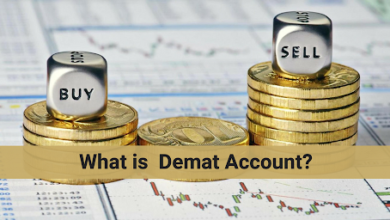Intent-Based Marketing: How it Works and Tips for Success

Have you been wondering about the marketing work that your competitors have done? Or perhaps, you may have days when you imagine what it would be like to grow your company, so you know more customers. From there, you would have a growing fan base and loyal visitors who keep coming back again and again.
What does it take to attract more customers and increase the bottom line? You may want to learn more about intent-based marketing.
So, keep reading. We’ll explain the basics, plus provide tips on how to execute intent-based marketing.
Understanding What Intent-Based Marketing Is
In the ever-evolving world of digital marketing, staying ahead of the curve is essential. One strategy that has gained prominence in recent years is “Intent-Based Marketing.”
But what is intent based marketing exactly? Let’s break it down. At its core, this type of marketing is a targeted approach that involves understanding and leveraging the online behaviors and signals of potential customers to tailor your marketing efforts.
In simpler terms, it’s about figuring out what your audience is looking for and then delivering the right message at the right time. Think of it as being in tune with your customers’ intentions.
How Does It Work
Now that we’ve scratched the surface, let’s dive into how the process works. At its core, this approach relies on data and technology to decipher the intent of users. Here’s a simplified breakdown of the process.
Data Collection
The journey begins with data. Businesses gather data from various sources, like website analytics, search engine queries, social media interactions, and even third-party data providers. This data is a goldmine, as it holds clues about what users are looking for.
Intent Detection
Once the data is collected, sophisticated algorithms and machine learning come into play. These tools analyze the data to identify patterns and signals of user intent. For example, they can detect keywords, search phrases, and online behaviors that suggest a specific need or interest.
Segmentation
With intent identified, marketers segment their audience. This step involves categorizing users based on their intent signals. In this pizza example, someone searching for “vegetarian pizza” has a different intent than someone looking for “gluten-free pizza.”
Content Personalization
Armed with intent-driven insights, businesses create highly personalized content and ads. This content is tailored to resonate with each segment of the audience, addressing their specific needs and desires. This is where the magic of intent-based marketing happens – the right message reaches the right person at the right time.
Real-Time Delivery
Timing is crucial. Intent-based marketing ensures that your message is delivered to users when they’re most likely to take action. So, when that person is searching for “best pizza near me,” your pizza shop’s ad or content pops up, increasing the chances of them becoming your customer.
Continuous Optimization
The process doesn’t end here. It’s an ongoing cycle of refinement. Marketers constantly check data and adjust their strategies to adapt to changing customer intent and behavior.
What Are the Benefits
Now that we’ve defined and know how it works, let’s explore why it’s a game-changer for businesses.
Enhanced Relevance and Personalization
Traditional marketing often involves casting a wide net in the hope of catching a few fish. Intent-based marketing, on the other hand, enables businesses to be hyper-targeted. By understanding a user’s intent, you can deliver highly relevant and personalized content and offers.
Improved Conversion Rates
When your marketing efforts align with a user’s intent, you’re more likely to strike a chord with them. It allows you to meet potential customers at the right place and time.
This makes it more probable for them to take the desired action, whether it’s making a purchase, signing up for a newsletter, or requesting more information. This leads to improved conversion rates and a higher return on investment (ROI) for your marketing efforts.
Cost-Efficiency
Traditional advertising methods can be costly, especially when you’re targeting a broad audience. Intent-based marketing, but, focuses on a narrower, more relevant audience segment. As a result, you can divide your marketing budget more efficiently, reaching those who are most likely to engage with your brand.
Reduced Ad Waste
Ever seen an ad that felt completely irrelevant to your interests? That’s ad waste, and it’s a common issue in traditional marketing.
With intent-based marketing, you reduce ad waste by showing your content only to individuals who are interested in your products or services. This not only improves the user experience but also minimizes ad spending on people who aren’t likely to convert.
Tips for Making the Most Out of Intent-Based Marketing
In this part, we’ll break down with actionable tips on how you can make the most out of it.
Know Your Audience
Imagine walking into a party and not knowing anyone. You’d feel lost, right? Similarly, in intent driven marketing, understanding your audience is crucial.
Dive deep into research to identify their pain points, preferences, and behaviors. Use analytics tools and gather data to create detailed customer personas. This will help you craft personalized and relevant content that resonates with your audience’s intent.
Keywords Are Your Ingredients
Keywords are the building blocks of intent marketing. They are the breadcrumbs that lead your audience to your content. Research relevant keywords that align with your audience’s intent, and strategically incorporate them into your content.
Remember, though, it’s not about stuffing your content with keywords. It’s about using them to enhance the user’s experience.
Embrace Data-Driven Decision Making
Regularly analyze the performance of your campaigns, track user interactions, and measure conversion rates. Use this data to refine your strategies and adapt to changing customer behaviors.
Test and Experiment
Don’t be afraid to try new things. Experiment with different content formats, ad campaigns, and targeting options. A/B testing can help you refine your approach and discover what works best for your audience.
Unleash the Power of Intent-Based Marketing
Intent-based marketing is a powerful tool for businesses of any size. With its ability to collect data and act on it in real time, companies can see lightning-fast results. Use the tips shared here to ensure your team is equipped with the necessary tools for success.
So why wait? Start using intent-based marketing today! Unlock the immense potential of data-driven decisions.
Did this guide help you? Want to learn more about new topics? Visit our other blog posts to see what we offer and how we can help you.
You Might Also Like:




